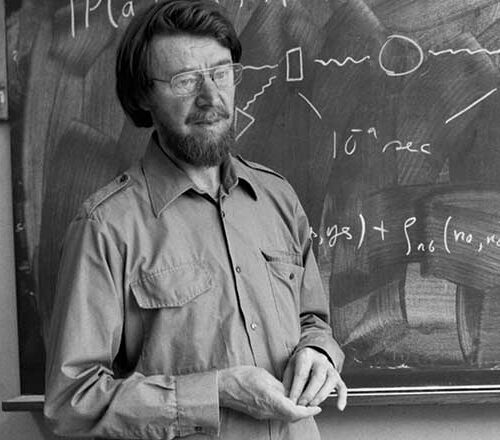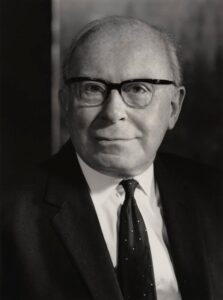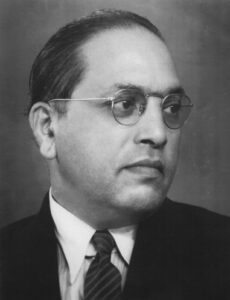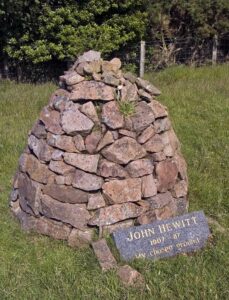

In the beginning natural philosophers tried to understand the world around them. Trying to do that they hit upon the great idea of contriving artificially simple situations in which the number of factors involved is reduced to a minimum. Divide and conquer. Experimental science was born. But experiment is a tool. The aim remains: to understand the world. To restrict quantum mechanics to be exclusively about piddling laboratory operations is to betray the great enterprise. A serious formulation will not exclude the big world outside the laboratory.
John Stewart Bell, ‘Against ‘Measurement” in Physics World, August 1990
John Stewart Bell was an Irish physicist and humanist, who from humble beginnings became one of the most significant scientists of the 20th century. His wife and collaborator, Mary Bell, wrote that though ‘an atheist for most of his life’, Bell maintained close friendships with those of different beliefs and even – while at Queen’s University Belfast – ‘attended some meetings of the Student Christian Movement for the sake of argument’. The recollections of those who knew him describe Bell’s fundamental curiosity and rich humanity; qualities which underpinned both his science and his humanism. As fellow physicist Roman Jackiw wrote:
In all my contact with John I was always made aware of his overwhelming intellectual precision and honesty. These are the qualities that made him such an incisive critic and therefore a wonderful colleague. Moreover, this attitude lay behind his scientific achievements which were informed by clarity of observation about previously murky subjects… He was an outstanding scientist and helped us to do good science, which is one reason why we became physicists. Moreover, many enter our field not only for the opportunity of exploring Nature in its most fundamental workings, but also for what we perceive as the purity and honesty of the profession. These qualities sometimes get submerged by pressure of personal ambition, struggling for achievement and recognition, but John Bell never lost them, and in this way he reminded us of the other reason for becoming a physicist.
Roman Jackiw, ‘Remembering John Bell’ (1998)
The biography reprinted below was first published in October 2009 as part of the Dictionary of Irish Biography. It is reproduced here under the terms of the Creative Commons Attribution Non Commercial 4.0 International license.
Contributed by Byrne, Patricia M.
Bell, John Stewart (1928–90), physicist, was born 28 July 1928 in Belfast, second child among one daughter and three sons of John Bell and Annie Bell (née Brownlee) of Tate’s Avenue, Belfast. Both families were of Scottish protestant extraction. Although his father had left school at 12, his mother saw education as a route to a fulfilling life and encouraged her children. However, means were limited and only John was able to stay at school over 14 years of age. He was educated at Old Ulsterville elementary school and Fane St. secondary school before attending the Belfast Technical College, where an academic curriculum, combined with practical courses, provided a sound basis for his future interests in practical and fundamental aspects of science. His interest in books and science from an early age earned him the nickname ‘the prof.’ at home. At the age of 16 (1944) he began working as a junior laboratory assistant in the physics department of QUB under its professors Karl Emelaus and Robert Sloane. Recognising his ability, they encouraged him to attend first-year lectures. The following year, with money saved from his job and some extra support, he enrolled for a degree course. A scholarship was later awarded and he graduated with a first-class degree in experimental physics (1948), staying on to achieve a second degree in mathematical physics (1949). He was particularly interested in quantum mechanics, and encouraged by the crystallographer Paul Peter Ewald (qv), who taught him in his last year at QUB, he applied for a position at the Atomic Energy Research Establishment at Harwell, near Oxford (1949). There he worked under Klaus Fuchs (later arrested for espionage, 1950) on reactor physics before moving to Malvern to work on accelerator design. Here he met Mary Ross, a member of the design group, and they began a collaboration that lasted his lifetime, marrying in 1954.
Although his father had left school at 12, his mother saw education as a route to a fulfilling life and encouraged her children. However, means were limited and only John was able to stay at school over 14 years of age.
In 1951 he was given leave of absence to work with Rudolf Peirls in the department of mathematical physics at Birmingham University, where he developed his version of the CPT theorem of quantum field theory (‘Time reversal in field theory’, Proc. R. Soc. Lond. (1955), A 231, 479–95) for which, with some additional work, he later gained his Ph.D. (1956). Unfortunately, the same theorem was published simultaneously by the renowned physicists Gerhard Lüders and Wolfgang Paulii, who received all the credit. Bell returned (1954) to Harwell to a newly set-up group to study elementary particle physics. Unhappy with the gradually more applied nature of the group’s work, he and Mary moved (1960) to the Centre for European Nuclear Research (CERN) in Geneva, where they could both continue pursuing their research interests; she on accelerator design and he on high energy physics, accelerator physics, and what he called his ‘hobby’, quantum measurement theory.
He published around eighty papers in high-energy physics and quantum field theory. In 1964 he published his greatest contribution to quantum theory, ‘On the Einstein Podolsky Rosen paradox’ (Physics, 1, 195–200), what he called his ‘non-locality theory’, which showed the potential for detecting instantaneous communication between sub-atomic particles that are far apart. This deviates from Einstein’s relativity theory, where nothing travels faster than the speed of light. Although his paper was at first ignored, it was taken on board by the physics community. The theory was experimentally tested and came to be known as ‘Bell’s inequality’ or ‘Bell’s theorem’, a proof of quantum theory that reopened to experiment the fundamental basis of physics. Henry Stapp of the Lawrence National Berkeley Laboratory, California, called his result ‘the most profound discovery of science’ (H. Stapp, ‘Are superluminal connections necessary?’, Nuova Cimento (1977), xl B, 191–205). Another of Bell’s papers discredited an earlier ‘proof’ by von Neumann of the impossibility of adding hidden variables to the theory of quantum mechanics.
Bell’s pioneering work had an enormous influence on subsequent developments in quantum theory, quantum experiments, and quantum technology.
Bell’s pioneering work had an enormous influence on subsequent developments in quantum theory, quantum experiments, and quantum technology. A collection of his own views on quantum philosophy was published in Speakable and unspeakable in quantum mechanics (1987) and presented with humorous illustrations. A list of his publications is found in Biographical Memoirs of Fellows of the Royal Society (1999).
He received many honours in his life, mostly at the latter end of his career; FRS (1972), Reality Foundation Prize (1982), honorary foreign member of the American Academy of Arts and Sciences (1987), the Dirac medal of the Institute of Physics (1988), honorary D.Sc. from QUB (1988) and TCD (1988), the Heinman prize of the American Physical Society, and the Hughes medal of the Royal Society (1989).
Unassuming and modest about his own work, he is remembered for his intellectual precision, integrity, and generosity, as well as a keen Ulster sense of humour.
Unassuming and modest about his own work, he is remembered for his intellectual precision, integrity, and generosity, as well as a keen Ulster sense of humour. An incisive critic, he could be irritated by those less rigorous in their views of quantum physics than himself. He was a frequent visitor to Belfast, where his family remained. His younger brother David, after studying at night, qualified as an electrical engineer and became a professor at Lambton College, Canada, where he wrote several textbooks.
John Bell died of a stroke at his home 1 October 1990 in Geneva, aged 62. The proceedings of a conference to commemorate his life’s work were published in Quantum [Un]speakables from Bell to quantum information (2002). The Institute of Physics, who had described him as one of the top ten physicists of the twentieth century, mounted a plaque commemorating his pioneering work and contribution to science on the old physics building of QUB (2002). According to Andrew Whitaker (1998), biographer of Bell, his work has ‘changed our perception of physical reality and the nature of the universe’.
Biographical encyclopaedia of scientists (1992); Andrew Whitaker, ‘John Bell and the most profound discovery of science’, Physics World, xi, no. 12 (1998), 29–34; P. G. Burke and I. C. Percival, ‘John Stewart Bell’, Biographical memoirs of fellows of the Royal Society, xlv (1999), 45, 3–17; John Bradbury, Celebrated citizens of Belfast (2002), 10–11; Charles Mollan and Brendan Finucane, Irish innovators in science and technology (2002); QUB communications office media release, 7 May 2002; Andrew Whitaker, ‘John Stewart Bell 1928–1990’, Physicists of Ireland (2003) 273–81; www.history.mcs.st-andrews.ac.uk/history/Mathematicians/Bell_John.html (accessed 5 Feb. 2003)
John Bell and the most profound discovery of science | Physics World
Main image: John Stewart Bell lecturing at CERN, 1982. © CERN

Elected to Parliament in 1949… and here I am! Where else could I be? The pages of the New Humanist […]

You must abolish your oppression yourselves. Do not depend for its abolition upon God or superman. Your salvation lies in […]

Humanism is… a tradition of thought and feeling combined with social action which stems from classical times and which has […]

My chosen ground Inscription on the John Hewitt Cairn John Harold Hewitt (1907-1987) was the most significant Ulster poet to […]